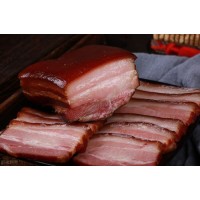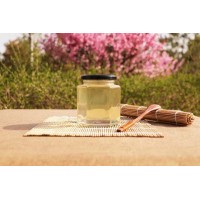How To Preserve White Sugar? Storage Methods For White Sugar
- 15.10.2024
- ling
- 0 reviews
How to preserve white sugar?
1.Store at room temperature
Seal
with a glass bottle or ceramic cap and put it in a dry and ventilated
place, or you can seal it with a sealed bag and put it in a dry and
ventilated place.
2.Keep refrigerated
Sugar can be refrigerated and needs to be sealed
3.Summary of key points
Sugar
is very sensitive to changes in temperature and humidity, and is very
easy to absorb moisture and appear to dissolve and agglomerate.
It needs to be placed in a dry and ventilated place
What details should be paid attention to when storing white sugar?
I. Container selection
Glass
bottles or ceramics can be used and sealed with a lid for storage. Such
containers can better block air and moisture and prevent white sugar
from absorbing moisture.
Sealed bags can also be used, but make sure the sealing performance is good to avoid air and moisture from entering.
II. Storage environment
Place
it in a dry and ventilated place. A dry environment can reduce the
chance of white sugar absorbing moisture, and good ventilation helps
maintain the circulation of air and prevent the accumulation of
moisture.
If you choose to store it in the refrigerator for
refrigeration, it must be sealed well before being put in the
refrigerator. Although the temperature inside the refrigerator is
relatively low, there is also a certain amount of moisture. Poor sealing
will cause white sugar to get damp.
III. Precautions
Since sugar
is very sensitive to changes in temperature and humidity and is
extremely easy to absorb moisture, pay close attention to changes in the
storage environment.
Regularly check the state of white sugar. If
melting and caking phenomena are found, measures should be taken in
time, such as drying in a dry environment, but pay attention to avoiding
pollution.
The place where white sugar is stored should be far away
from water sources and humid areas, such as near the kitchen sink. At
the same time, avoid direct sunlight, because high temperatures may also
affect the quality of white sugar.
How to determine if white sugar has absorbed moisture?
The following methods can be used to determine whether white sugar has absorbed moisture:
I. Observe the appearance
Normal
white sugar has distinct granules and is white or light yellow. If
white sugar appears caked, it is likely to have absorbed moisture. The
size and hardness of the caking can reflect the degree of moisture
absorption. The larger and harder the caking, the more serious the
moisture absorption.
Observe the color change of white sugar. The
color of white sugar after absorbing moisture may darken and lose its
original white or light yellow luster.
II. Touch and feel
Touch
white sugar with your hand. If it feels damp and sticky, it means that
white sugar has absorbed moisture. Normal white sugar should be dry and
feel loose.
Gently squeeze white sugar. If it can be easily crushed
into powder, it means that white sugar is relatively dry; if it feels a
certain degree of hardness and is difficult to crush, it may be due to
caking caused by moisture absorption.
III. Smell
Normal white
sugar has no special odor. If white sugar absorbs moisture, it may
produce an abnormal odor. This is because the impurities in white sugar
change in a humid environment.
Smell the packaging bag or container
of white sugar. If there is a damp smell, it may also indicate that
white sugar has absorbed moisture.
IV. Dissolution test
Take a
small amount of white sugar and put it in water. If white sugar can
dissolve quickly, it means that white sugar is relatively dry; if the
dissolution speed is slow or some white sugar particles cannot dissolve,
it may be that the properties of white sugar have changed due to
moisture absorption.
Observe the dissolved white sugar water. If
there is turbidity, it may also be that impurities are brought in after
white sugar absorbs moisture.
Reviews (0)
Related Articles
How To Preserve Rice? Keeping Your Rice Fresh for a Long Time
- 16.10.2024
- ling
- 0 reviews
Rice preservation methods: sealed,dried,garlic,orange peel,liquor,vacuum storage method,ventilate, dry and avoid direct sunlight,keep temperature around 15°c and relative humidity of 60%-65%
Read MoreHow To Store Bacon Ingredients? 6 Tips For Saving Bacon
- 18.10.2024
- ling
- 0 reviews
Preservation secrets of cured meat: keeping the deliciousness lasting, why should you cook bacon before eating it? How to store bacon? 6 easy storage tips you can't miss!
Read More10 Honey Storage Tips: Keeping Your Honey Sweet and Fresh
- 23.10.2024
- ling
- 0 reviews
To store honey correctly to prevent spoilage and maintain its quality, you could follow tips:sealed storage by proper lid sealing,cool and ventilated storage avoiding light and sunlight,container material considerations avoiding metal containers,refrigerator storage
Read MoreRelated Products
Transparant Food Vacuum Sealing Bag in Roll
Series: Vacuum Seal Bag,Vacuum suction fresh-keeping bag, single-sided textured food sealing film ba..
$1.50
Embossed Compressed Vacuum Seal Food Storage Zipper Bag
Series: Vacuum Seal BagSpec: Width: 21-30cm; Length: 22-34cmThe default price of product i..
$0.22
Pre-cut Vacuum Seal Bag
Series: Vacuum Seal BagSpec:Width: 7-30cm; Length: 10-40cmMaterial: 28.5% TIE + 28.5% PA + 43% ..
$0.75
New PE Valve Vacuum Zipper Bag
Series:Vacuum Seal BagSpec:Width:21-30cm;Length:22-34cmMaterial:PA + PE, 3 Layer, BPA FreeColor:Tran..
$0.30








